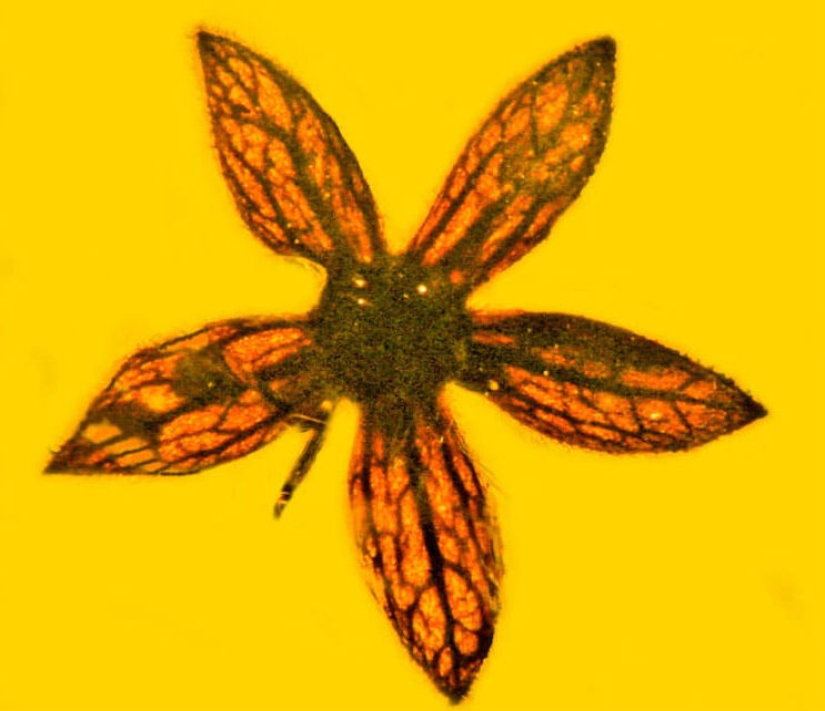In Myanmar, flowers of an unknown species, which are 100 million years old, were found in amber
Researchers from the University of Oregon have discovered 100 million-year-old flowers in Myanmar. Flowers with a diameter of 3.4 to 5 millimeters were most likely plucked from a tree by a dinosaur in the Cretaceous period.
"Dinosaurs could knock down branches with flowers, they fell into the resin on the araucaria tree, which preserved them to this day," explained Professor George Poinar Jr. It is curious that araucarias belong to agathis, which are currently growing in Australia and New Zealand.


Novoyuzhnouelsky Christmas shrub.
The researchers named the flowers with five petals Tropidogyne pentaptera — penta means "five" in Greek, and ptera means "wings". They were attributed to the currently existing plants of the Cunoniaceae family, which nowadays includes shrubs and trees with leathery leaves and small flowers growing in the Southern hemisphere.

Scientists managed to properly examine seven flowers. They have preserved five long sepals, a nectar disk and in some - an ovary (the lower part of the pistil) with protruding "ribs".
How did the distant relatives of the Myanmar fossil end up in modern Australia? Professor Poinar explained that, most likely, the place in Myanmar where the flowers were found was part of Greater India, which separated from Gondwana, the procontinent of the Southern hemisphere, and joined South Asia. Malaysia, including Burma, was formed during the Paleozoic and Mesozoic era due to the movement of lithospheric plates.
Keywords: Archaeology | Myanmar | Discovery | Scientists | Flowers
Post News ArticleRecent articles

American artist Lee Price is sure that eating is a completely natural process, but many are ashamed of their attitude to food, ...

There is an unusual exhibit at the National Museum of Natural History in Washington. This is the skeleton of a man, on whose chest ...
Related articles

In the night from 16 to 17 September 1899 at the Kharkov Institute for noble maidens it has taken now several pupils. They suffered ...

Among the Russian who migrated to the North, there existed legends about the mysterious people of the white-eyed Chud, who was ...

Historians believed that during the Bronze age, Northern Europe was a backward region. However, findings on the German river ...

A series of works by photographer Brian VILS from new York, dedicated to girls, sheltered the homeless and abandoned cats. 'brien ...